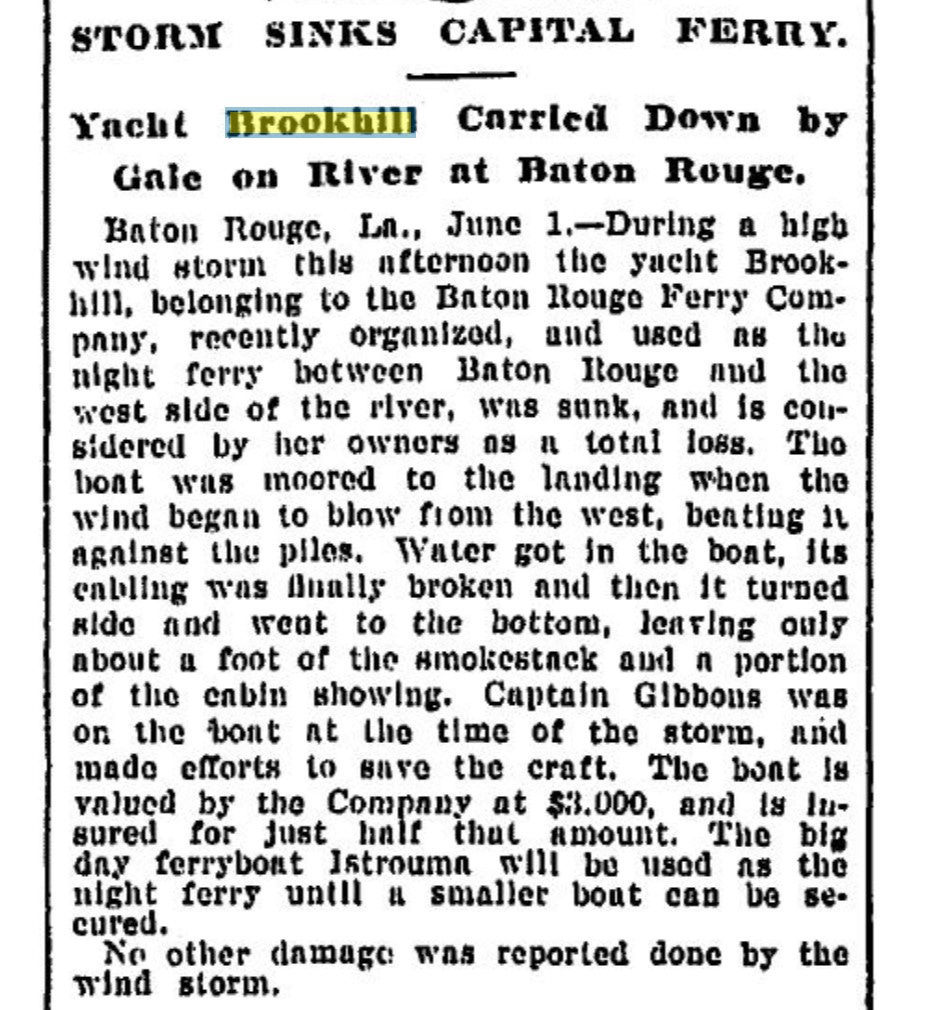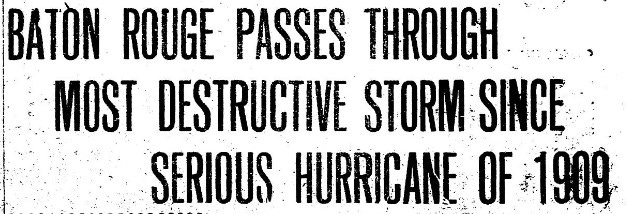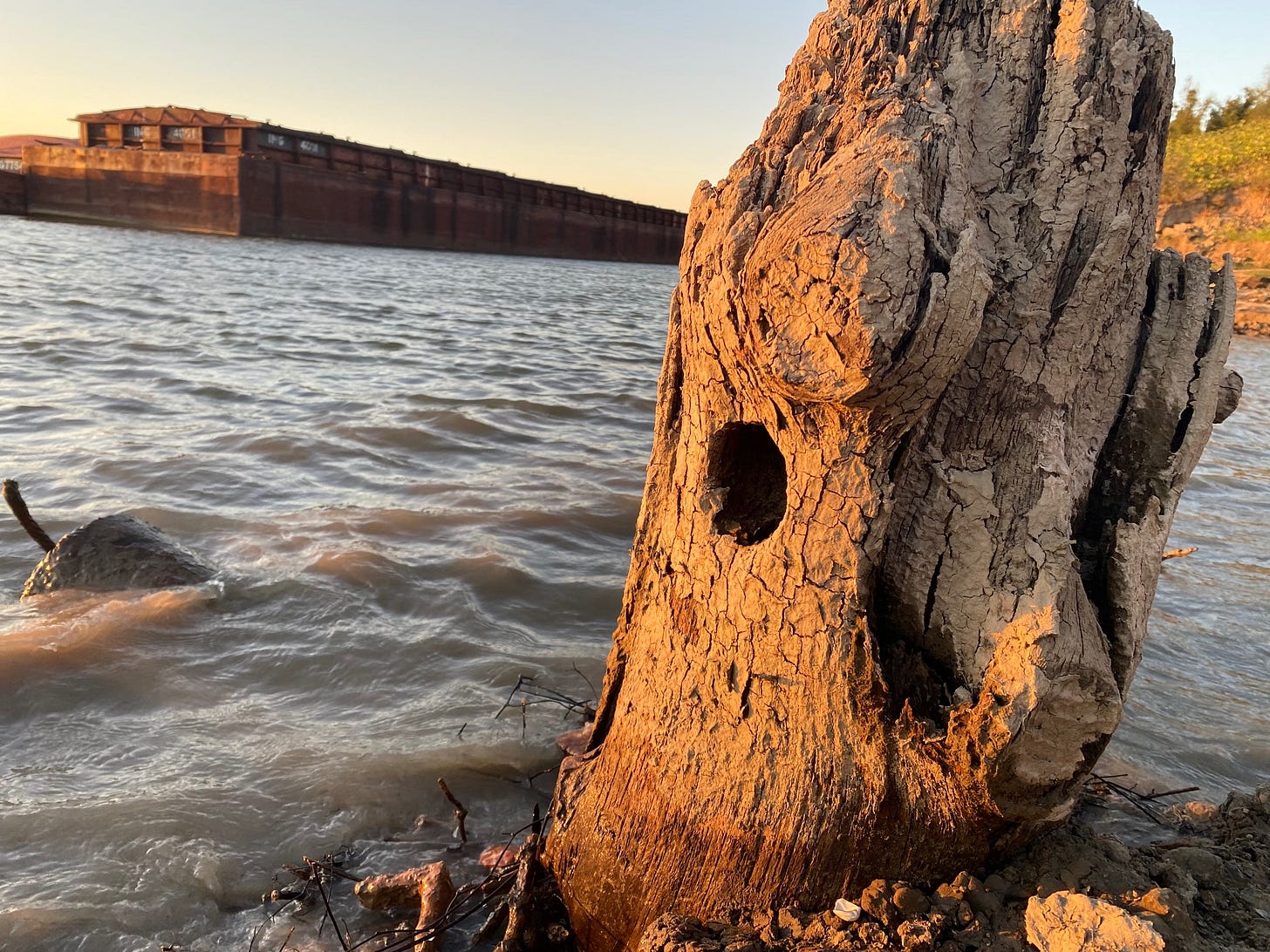There are many reasons, including shipping delays and saltwater intrusion, as to why the dramatically low level of the Mississippi River is a problem. But one unexpected discovery is sending people to the riverbank with smiles on their faces.
The remains of a ferryboat are visible for the first time in several decades. This is the first time on record that it’s been fully dry, so archeologists have been busy documenting all it has to offer.
The wreckage is located across the street from the IBM Building, 525 Lafayette Street. All you have to do is walk up the levee steps, cross over the railroad track, then go down to the dirt road. Walk down the road until it looks like you can’t go any further because of vegetation. Look for a small path that’s been cut through that vegetation. Be careful, they have some thorns!
Continue down to the bottom and look to your right. Voila!
It’s a steep drop, though that’s hard to tell from the photos. This wall of the river is not typically walked on. It’s almost always underwater, but the nationwide drought this summer has caused our little patch of the river to run extra dry. We are, after all, downriver, and only one of a handful of stops before the ocean.
RELATED: The Mississippi River is the lowest it’s been in 10 years
The state archeologist Chip McGimsey told WAFB that the ship is believed to be the Brookhill Ferry, which was the night ferry that carried people and buggies across the river.
I searched through the old archives to learn as much as possible about the ship. Apparently it sank more than once. The first time was on June 1, 1906, according to an article published in the Times-Picayune.
During a high wind storm this afternoon the yacht Brookhill, belonging to the Baton Rouge Ferry Company, recently organized, and used as the night ferry between Baton Rouge and the west side of the river, was sunk, and is considered by her owners as a total loss. The boat was moored to the landing when the wind began to blow from the west, beating it against the piles. Water got into the boat, its cabling was fully broken and then it turned side and went to the bottom, leaving only about a foot of the smokestack and a portion of the cabin showing.
The ship had only been in Baton Rouge since 1901. The captain was on the ship at the time. The only name given in the article was “Gibbons.” It says he attempted to save the vessel, but obviously did not prevail. It was valued at $3,000, which is just under $100,000 in today’s money.
McGimsey, however, believes what we see today is actually from the wreckage of the 1915 incident. Although the Brookhill did sink that year, it was recovered and sold for scrap alongside its sister ferryboat, the Istrouma, which operated during the daytime.
Both ships were damaged during a storm considered as destructive as a hurricane, but not officially classified as such. That happened on September 14, 1915.
Although it only seems like a slight difference numerically, the landscape of the city was much different between 1906 and 1915. In 1906, Standard Oil had not yet set up shop, nor had the iconic Goudchaux department store. The telephone had only just been invented by the time of the second wreck.
But historical cliffnotes make little difference to folks when looking at the wreckage. Instead, it seems childlike wonderment takes over when in its presence. We skipped over, giggling as we went, when we discovered the location.
The shipwreck will likely only remain visible for another month or so. Eventually, the river will rise again and this unexpected tourist attraction will be closed for the foreseeable future. It will likely be decades before it is seen again.












Thanks for this information. Bruce and I went down there and met and talked with quite a few interesting people milling around the site. It was a lovely excursion on a beautiful sunny afternoon.